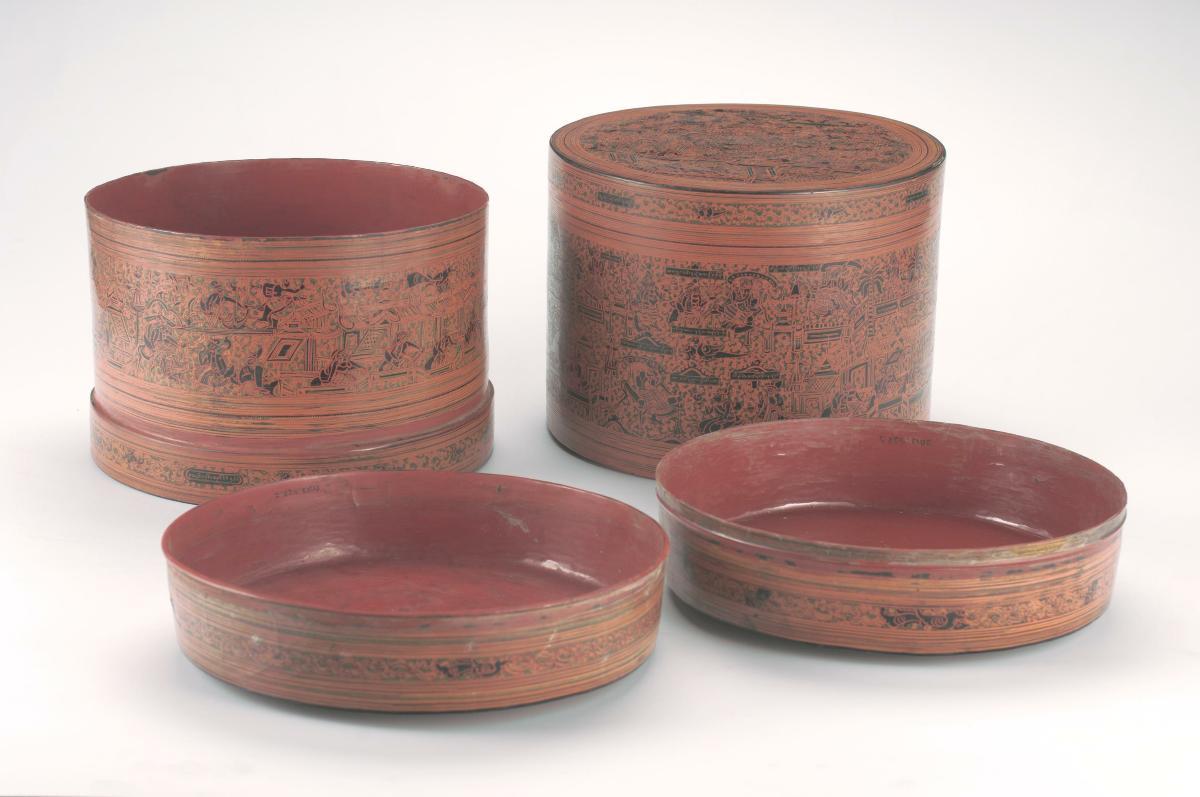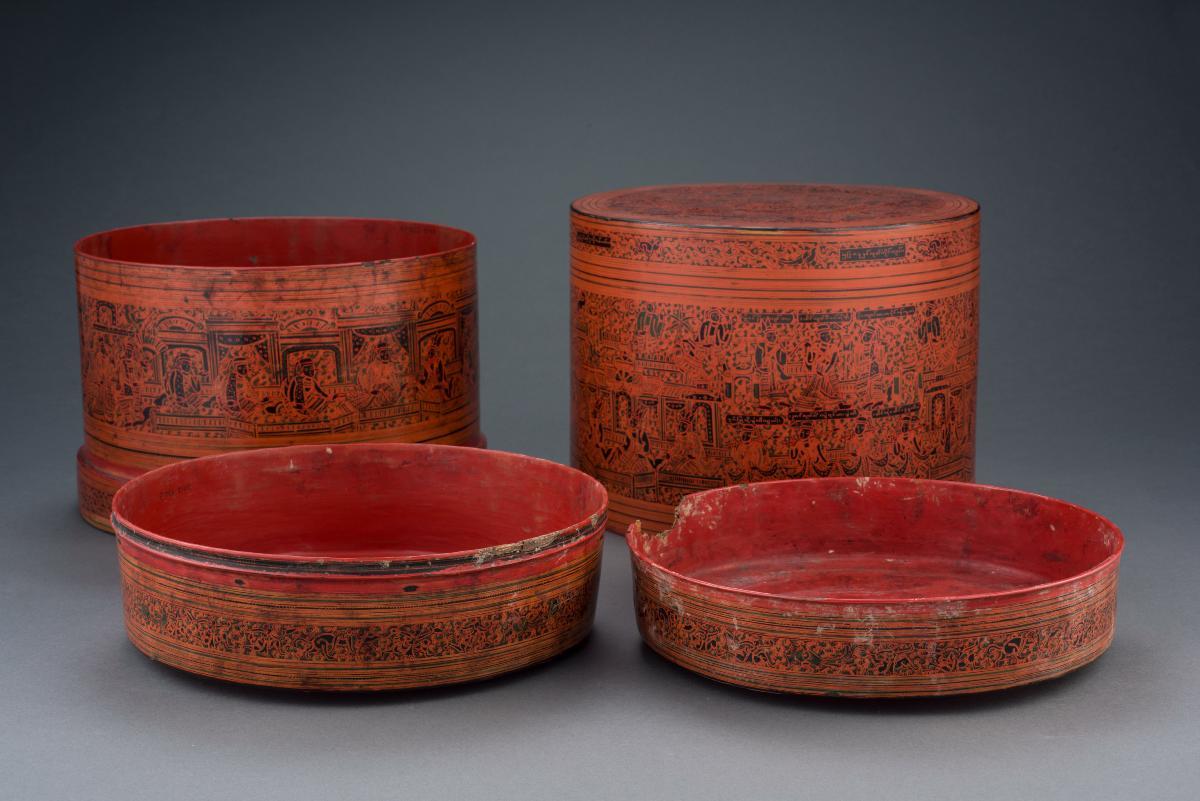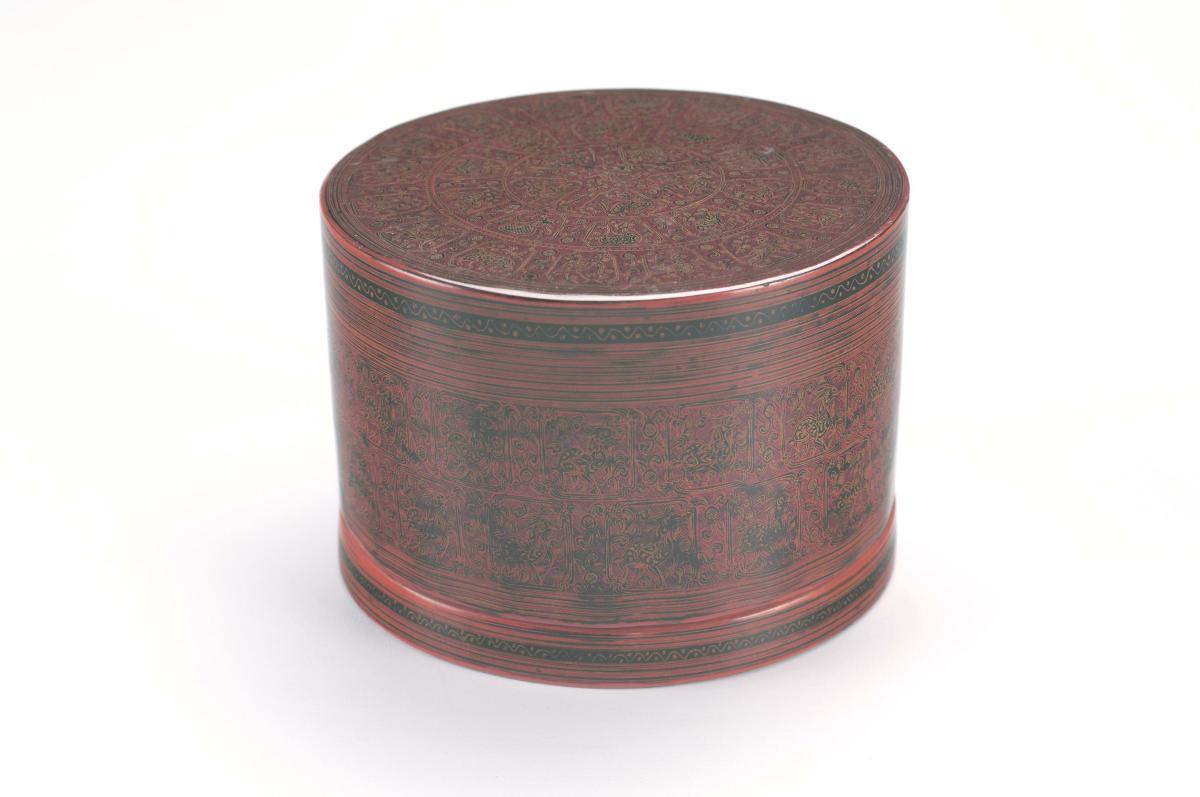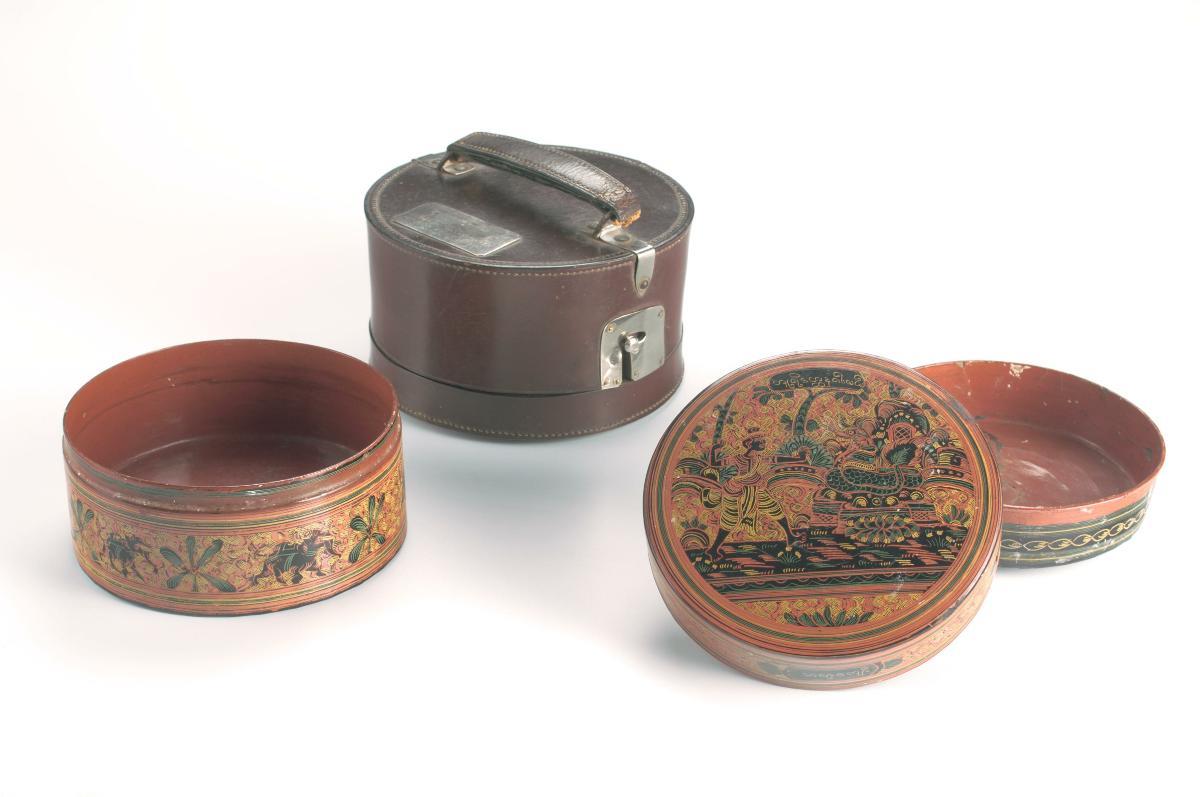This elaborately decorated betel box has narrative scenes with motifs of royal pavilions and armed guards, on the cover and the box. This type of design is known as nandwin (literally 'king at court').The scene on the sides of the cover are arranged in two registers and contains several inscriptions, including one with the date equivalent to 1906. Betel boxes are one of the most popular forms within the vast repertoire of Burmese lacquer. The tradition of betel-chewing required approriately designed boxes, in which the necessary ingredients could be stored and presented at a range of social and ritual occasions. As in many Southeast Asian cultures, betel became a signifier of social status and likewise the betel box. In Burma, royal gifts of betel were made to favoured guests, and the ritual procession of a young monk to his novitiation ceremony was usually proceeded by a beautiful young girl who carried a betel box.















